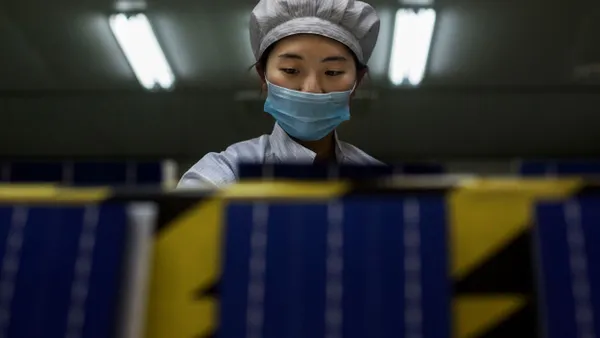Dive Brief:
- An impressive list of utilities and groups have developed a $17.6 billion plan to rebuild Puerto Rico's electric distribution system, including a focus on resilience to withstand future storms and the inclusion of modern grid technologies and control systems.
- The Puerto Rico Energy Resiliency Working Group (PRERWG) was formed by New York Gov. Andrew Cuomo (D), whose administration is also pressing for the federal government to approve a $94.4 billion aid package to the embattled island.
- The island's utility grid was destroyed by Hurricane Maria in September, but more than a third of the island's generation remains offline almost three months later.
Dive Insight:
The Puerto Rico work group's plan includes both a new vision for the island's electric grid as well as a focus on short-term recovery. It has been about 12 weeks since the island was ravaged by Hurricane Maria, and just 64% of the island's generation is back online.
"We need to act now to transform the island's power grid and provide the people of Puerto Rico with a modern and reliable electric system," Cuomo said in a statement.
The plan for Puerto Rico is similar to what was done in the aftermath of Superstorm Sandy in New York, he explained. The aftermath of Hurricane Sandy led to New York's Reforming the Energy Vision, which aims to completely transform the utility business model and incorporate distributed energy resources to boost resilience and reliability.
The proposed rebuild would feature increased renewable generation and new distributed energy resource technologies like energy storage and microgrids. The plan would also reduce dependency on fossil fuels and make energy more affordable and sustainable for the island.
Recommendations include the use of modern technology and build on experience learned from other storms and disasters. The group also noted that the plan's recommendations align with the U.S. Department of Energy's recommendations for power system hardening.
Puerto Rico Electric Power Authority's new system needs to withstand a Category 4 storm, which produces wind speeds of 155 miles/hour and heavy floods.
However, according to the working group, "at the time of this report, it is unclear what percentage, if any, of the PREPA system is being rebuilt to a high Category 4 standard during restoration. As new information on the restoration design basis becomes available, it will be necessary to reassess the quantity of work that will be necessary after restoration."
After a slow start to storm recovery, hampered by a contract debacle with Whitefish Energy, work is now occurring in earnest to reimagine the island's grid. Separately, a wave of smaller distributed energy resources is helping to stabilize smaller areas at the distribution level.
The U.S. Army Corps of Engineers has selected Fluor Enterprises, of Greenville, S.C., for an $831 million time-and-materials contract to restore electric power in Puerto Rico. The work is estimated to be complete by Feb. 28.
Gov. Ricardo Rosselló said the island continues "to address the challenges of rebuilding Puerto Rico and restoring power to residents across the island." He called the working group's report and recommendations "a critical foundation to rebuild and reimagine Puerto Rico's electric power system."
Cuomo, Rosselló and members of the New York Congressional Delegation yesterday also called on the federal government to approve a $94.4 billion federal aid package for Puerto Rico
Of the proposal's total estimated cost, the majority would go towards overheard lines. About $5.3 billion would go to rebuild overhead distribution lines, including 38 kV lines, and $4.3 billion would go to overheard transmission lines. Generation adds another $3 billion to the total cost.
The Puerto Rico working group is a baker's dozen of well-known energy groups, and their proposal was developed with assistance of Navigant Consulting.
Members include: New York Power Authority, Puerto Rico Electric Power Authority, Puerto Rico Energy Commission, Consolidated Edison, the U.S. Department of Energy, Edison International, Electric Power Research Institute, Long Island Power Authority, Smart Electric Power Alliance, Brookhaven National Laboratory, National Renewable Energy Laboratory, Grid Modernization Lab Consortium, and Pacific Northwest National Laboratory.














